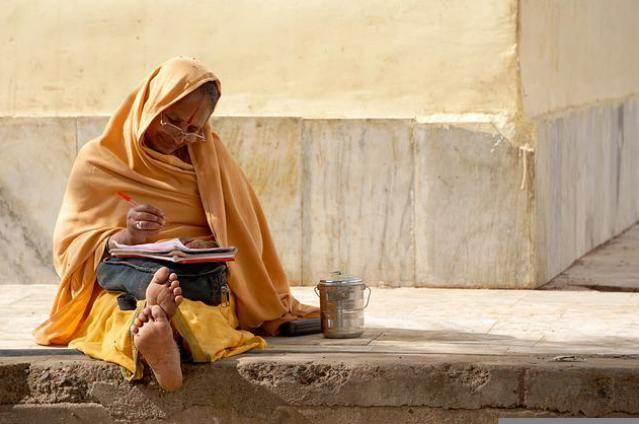
My urge to do this series came from Bulbbul when in the opening scene, Bulbbul asks to pishima “bichiya kyu pehente hai?” To which she replies to keep women in control because of a nerve there. You might find it silly but it’s true. As history was written by the known and famous, similarly, norms for women were written by orthodox men claiming to have read sacred texts and scriptures. Their idea of a female is of beauty, pleasure, delicately carved, and BONDED because they belonged to MEN specifically. All the symbols women carry with themselves and the norms in the name of post-marriage rituals and sringar for the husband was nothing but to see a beautiful caged bird. How can just wearing a particular colour be of any good or not for the husband and why does only the woman have to do it? Why not men? Because, again, symbolically, more than Sringar, it was Adhikar – Possession, and Oppression. With the sound of payal, men would know about their movements and bichiya would stress on the nerves, thus making them uncomfortable and making movements slow.
Should post-marriage Sringar be a compulsion or out of free will?
Now let’s talk about Sindoor!
Vermilion, or as we more fondly call it Sindoor, is proprietary to an Indian married woman. It is customary to wear Sindoor in the mang (hair parting) across states of India. Sindoor is made up of vermillion and it is the red powder, stark red or sometimes orange in color, applied by women post her marriage.
What is more interesting is the fact that, this customary practice of Indian married women has a long history, dating back to some 5000 years ago, as described in Hindu texts. Historians say that it existed during the Harappan civilization.
Mentioned in Hindu Epics:
- In addition, legend has it that Radha, the companion of Sri Krishna transformed the Kumkum into a flame shape on her forehead.
- Draupadi too wiped her Sindoor in utter dismay and despair at the time of stripping off her saree in the Hastinapur court.
- In Ramayana too, Sita used to apply Sindoor to please her husband, Lord Rama.
- As per our traditional belief, Ma Parvati also applied Sindoor and shared her sacred sentiments on marriage and Sindoor with her women folks.
But then again in many parts of modern India, why is refusing to wear sindur seen as women not accepting the marriage or creating ill fate for the husband? I wear it at times when I like it, why make it compulsory?
And when everything else fades, what do we, as women, have as our identity? I was watching a movie in Bengali named Mukerjee Dar Bou, meaning the wife of Mr. Mukerjee. It is the story of both daughter-in-law and mother-in-law who don’t get along with each other at all but at the end they realise that their only identity has been to be Mrs. Mukerjee their entire life and they forgot their own identity meanwhile; even their names. Why so? Why are women after marriage seen from the narrow glass of a wife or a mother or a daughter-in-law? Though times have changed, 70% of the thought process remains the same. My friend asked me today don’t Bengalis do anything for husbands like Teej or Karwa Chauth? Frankly speaking, I don’t know and neither do I want to. In a relationship, more than dressing up and fasting to show inferiority and massage superiority, it is important to have faith, love, and above all equality. Me fasting won’t help my husband but will definitely unhelp me by lowering my blood sugar.
Why do that? I am sure no loving husband would want their wives looking like cladded jewellery hangers and fast for them. The only scientific reason I see behind fasting is detoxification of the body. If so, then it should be both ways, or not at all. Or it should be by choice. Not for the society that is always ready to shame a woman for not doing something because how can we forget how hard Raja Rammohan Roy fought to get rid of the Sati system. It was that bad; no husband, no identity, no life! With this I leave you to wonder. Why do we have all these at all? It’s not just in India, but in the West too like the tight bodysuits worn by victorian women that made it even harder to breathe just to adhere to some beauty norms created by mostly men or Chinese women cutting off toes to look pretty and have small feet because men considered small feet as a sign of beauty. Stereotypes persist everywhere. How are we going to fight it is on us!
